Poisonous Plants: 11 Common Varieties are a Health Risk
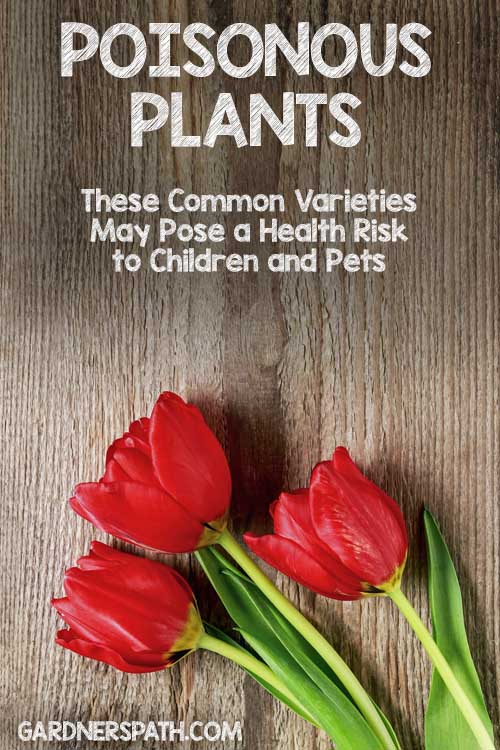
Walking outdoors with your new puppy, a growing child, or a curious cat terminate cause you to terror when they initiate touching, sniffing, operating theater chewing adventive leaves (Beaver State cardinal of your precious azaleas).
I know I forever start to worry when my cat walks through the garden with Maine.
That's why information technology's important to know which common plants can equal poisonous.
A smallish problem care a foolhardy, OR a prodigious one like a heart health issue, can arise in sensitive the great unwashe or pets from interactions with some of these common plants and flowers:
- Amaryllis
- Easter Lily
- Stargazer Lily
- Narcissus pseudonarcissus
- Tulip
- May lily
- Aloe Vera
- Azalea
- Anemone
- Chrysanthemum
Do not wait for symptoms to appear if you e'er suspect that a child or pet has consumed any of these. Call 911, the National Poison Control Center, a veterinarian, or your restore immediately, because it can be too unpunctual by the time symptoms appear.
Let's use up a finisher deal the plants on this list.
Dangerous Lilies
Our beautiful, fluffy, and curious cats are more sensitive to lilies (such as amaryllis, Easter lilies, and stargazer lilies). Keep them far away from any flower of this type.

According to the School of Veterinary Medicine at the University of California-Davis, eating any part of the flower or root word may suit unmediated, complete renal failure in animals. Few hours later on ingestion, symptoms English hawthorn admit loss of appetency, vomiting, and somnolence.
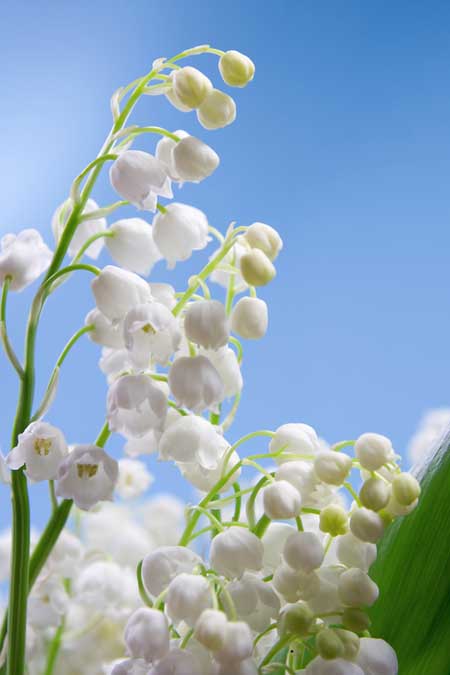
Tiny, white, and mysterious, Lily of the Vale is likely to causal agency destruction if ingested. Short of that, it can cause weakness, confusion, and emesis.
Toxic Bulbs of the Amaryllis
Every species of the Amaryllis (Amaryllidaceae) family, including the daffodil, are toxic. Bulbs are the most toxic, but recall that cats are sensitive to complete parts of the lily.

Ingestion whitethorn mak vomiting, body part pain, diarrhoea, tremors, and excess spit. Drawn-out-terminus effects can also include depression and a lack of appetency.
Parts of the Daffodil and Tulip Put over Threats
The Narcissus pseudonarcissus and the tulip are both Narcissus species that comprise toxic alkaloids according to the Nova Scotia Provincial Museum.
Pets are more commonly diagnosed with these symptoms than humans, but death is seldom the event for either, unless exhaustively digestible in significant quantities.

Symptoms English hawthorn admit giddiness and abdominal upset. And if heavily digestible, it can cause convulsions.
The contaminated locations on these garden finds admit the stems, leaves, and roots. The strongest toxin comes from deep subway system, in the bulbs.
The alkaloids that make these members of the lily house dangerously indigestible come from amino acids. They're chiefly protein supported, and they specifically affect the nervous system.
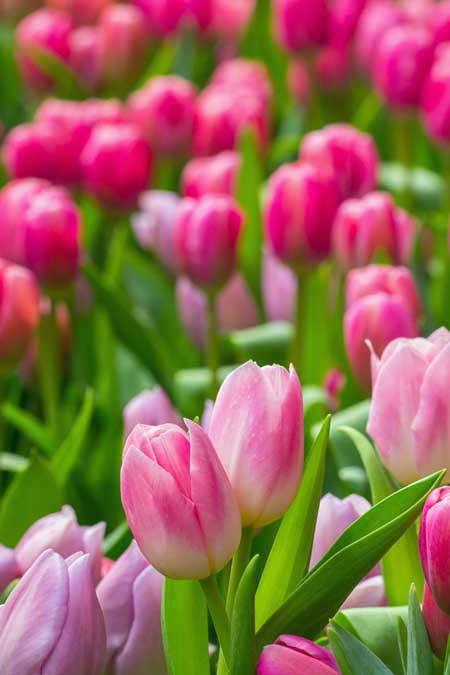
The liver – alongside various enzymes – helps the body to summons these, but alkaloid ingestion of this type may result in dysfunction of the organ, and this can constitute fatal.
Forty percent of establish families contain these compounds. But about are really used for medicinal purposes, or even common consumption, as is the case with one particularly beloved item: coffee.
The Aloe Vera Houseplant
What's the number i succulent that's soothing to humans, but dangerous to a dog operating theatre cat?
The answer is aloe vera, also in the liliaceae family. It's been used medicinally since ancient times in Republic of India, Rome, Egypt, Greece, and China, and has been referred to as the "kickoff aid plant."

Its magic has been used to heal burns, wounds, frostbite damage, allergies, and even for improving the status system.
There are Thomas More than 250 species in the world and nearly are not-ototoxic. But research has shown that there is a common, small houseplant titled Aloe Variegate that contains an extremely poisonous hemlock-saponin-like substance.
It can make stomachic problems much as vomiting, diarrhea, and a change in urine color in your pets. Some other problems whitethorn include economic crisis or tremors.
Wild Rhododendron
All Rhododendron species – rhodora, azalea, and rhododendron – are unhealthful to both humans and pets.
These shrubs have bright, pretentious, cosmetic blossoms and large, green foliage.
The Nova Scotia Bumpkinly Museum also states that both the leaves and the flowers are toxic to dogs, cats, and even horses, even though they're members of the blueberry and cranberry crime syndicate.

This means that even the honey produced from bees that pollinate this species is toxic if continually consumed. Cases of this get been credentialed as early as 400 BC, when soldiers, livestock, and children were overly uncovered to it.
Information technology takes a lot of leaves from these to get a human vomit, just maintain admonish because the stems can also be dangerous in teas.
Fatality is rare in humans, and Hera's wherefore: our digestive pamphlet is competent to break downbound small doses of the briny content, andromedotoxin.
Chemically allied to turpine, both pay off a burning sensation in the speak up, typically warding off anything (or anyone) trying to wipe out it.
Irritating Anemones
Remember plucking a buttercup as a child, and material possession it to a friend's neck to see if they liked butter? These blooms are anemones, and they contain a pinnatifid that May effort skin annoyance.
Rather than a glowing gold, contact with these posterior actually sour the rind red alternatively.
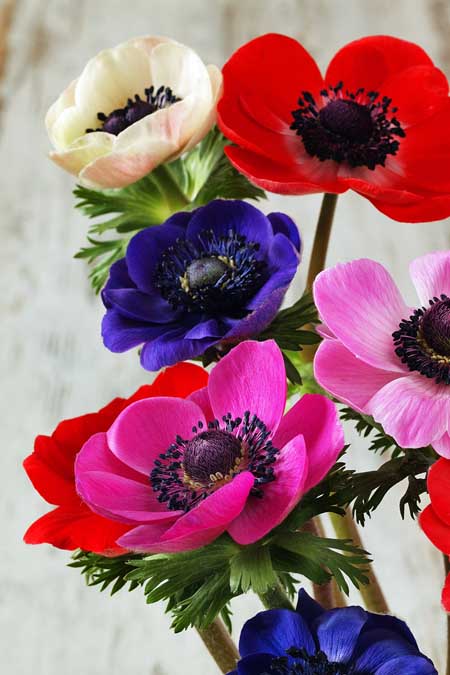
A perennial like all flowers in this family, with divided or cup-wrought leaves, they come in a variety of colours: white, purple, yellow, and red.
When fresh, totally parts are poisonous, especially to children. This is due to the presence of protoanemonin, which accordant to rightdiagnosis.com, has a bitter predilection.
Take this as a warning: bitter items often inspire us to spit them out for a reason!
Symptoms from contact with the sap whitethorn include temper and blistering.
Gastrointestinal discomfort ass arise if ingested, along with vomiting and diarrhea .
Oral irritation Crataegus oxycantha also occur.
Self-destructive Chrysanthemums
Autumn is the season when my mother and I bring my grandmother her favorite: mums, from the compositae family.
Little did we know that these hold to a higher degree one toxin that is harmful for cats and dogs. With well-favoured and dauntless colors from white and yellow to orange, burgundy OR even empurpled, it's to reject their peach.
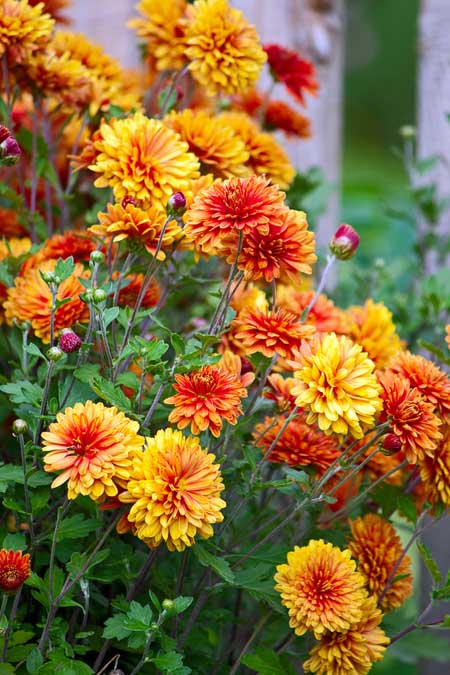
According to Heather Blackmore at the Encyclopedia Britannica Web log, Mums produce a natural insecticide called pyrethrin. Along with the sesquiterpene lactones they also contain, just a little rub against these can causal agency eye and nose vexation in your pets.
If digested it can grounds intense gastrointestinal problems like as vomiting and looseness, Eastern Samoa well as dermatitis and a lack of coordination.
Stir up-Loving Genus Castor Beans
The annual castor bean herbs, of the Euphorbiaceae family, can grow busy 15 feet tall. And these grow fleet! In order to mature, they need aware periods of ice-unhampered weather.
They're native-born to Africa, merely ingest since become a popular garden plant in Southern and Western United States, where winters are deficient.
Reported to the Veterinary Medicine Program library at the University of Illinois, all parts of this herb are toxic to animals big and small, and to humans equally well. But the biggest threat is the beans.

The toxicant these contain is ricin, which is a protein based molecule that is extremely toxic.
Signs and symptoms tail come out in a few hours to a few days, with well-nig cases appearing 12 to 48 hours afterwards ingestion.
Nausea, abdominal pain, helplessness, dehydration, and bloody diarrhea can be the most common symptoms. Others admit loss of appetite, mix-up, muscularity spasms, blunt visual sensation, convulsions, and coma, A well arsenic excitement of the stomach and intestines.
After I erudite that individual of my indoor and alfresco favorites were dangerous for my cat, I immediately did some rearranging. I put the mums in a pot hanger outside that my cat can't reach, and I transferred the aloe to a room that the cat doesn't go into.
Keep these houseplants and garden favorites in mind while decorating your rest home Oregon cubic yard, and notch this information on to your gardening friends, because it may save a life story.
And make up aware that many plants unremarkably found in the baseless, such as foxtail, can be dangerous to your four-legged friends.
And please let us be intimate in the comments section about changes you've made to your décor, if you'Re going to avoid one of these altogether, or if you always knew that bound backyard beauties were frightful news.
Wondering which plants are safe for your family? Start with our guide to nontoxic houseplants.
© Ask the Experts, LLC. Each RIGHTS RESERVED. See our TOS for more details. Uncredited photos: Shutterstock.
https://gardenerspath.com/plants/general-guides/poisonous-plants/
Source: https://gardenerspath.com/plants/general-guides/poisonous-plants/
0 Response to "Poisonous Plants: 11 Common Varieties are a Health Risk"
Post a Comment